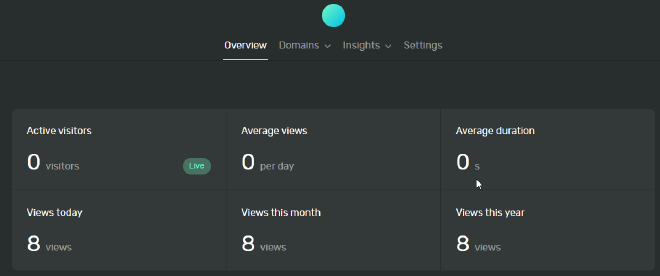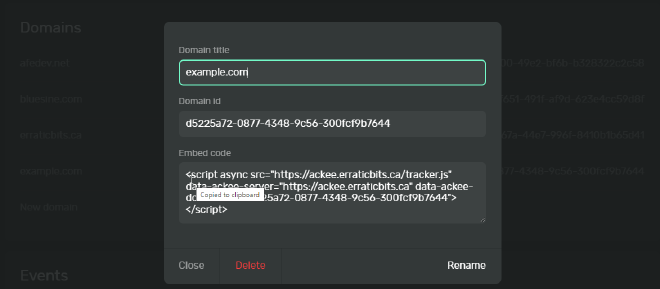Analytics via. Ackee
It’s a problem I haven’t been particularly invested in fixing.
- I don’t want to hand over usage information to some free 3rd party who is going to mine that data for some nefarious purpose.
- It’s not an important enough problem for me to pay a 3rd party to solve (with the naive assumption that a paid service wouldn’t exploit my data).
- It’s not an important enough problem for me to invest significant time into.
Yesterday, however, I came across Ackee which brilliantly fills this gap for me.
Self-hosted, Node.js based analytics tool for those who care about privacy. Ackee runs on your own server, analyzes the traffic of your websites and provides useful statistics in a minimal interface.
Here are some quick notes on what I went through to deploy this and integrate it with this website.
The end result is a nice visualization of usage information of my various websites without horribly compromising the privacy of my visitors. I haven’t been using it long, but it looks like I’ll eventually see trends identified in its output too!

I use Docker (compose) and Traefik (my setup) in my environment, so I started with docker-compose.yml file from the Docker Compose Getting Started Documentation.
I updated my DNS to point ackee.erraticbits.ca to my server.
I needed to add the usual Traefik labels/net to my docker-compose.yml. In addition, I had to add some additional CORS headers to allow calls from my various websites.
|
|
Start it up:
$ docker-compose up -d
Once it’s up and running, I can visit https://ackee.erraticbits.ca and login with the username and password from the docker-compose.yml file.
Adding analytics to the site is trivial. Just click “Settings” and “New Domain”.

Once the new domain has been added, click on it and copy the “Embed Code” and paste that into your webpage template.

That’s it. The only problematic part for me was getting the CORS headers configured correctly.